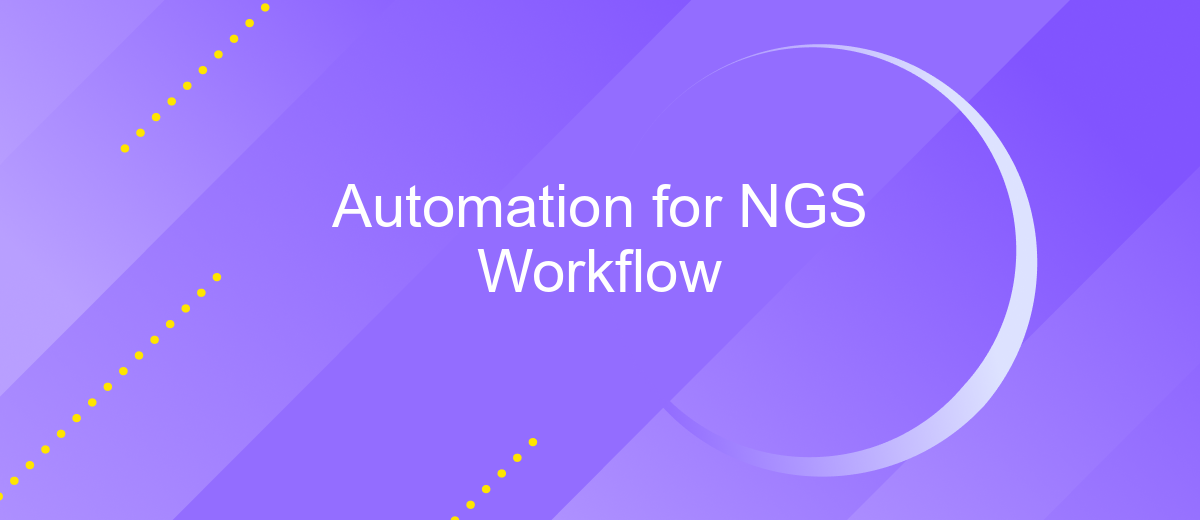Automation for NGS Workflow
Next-generation sequencing (NGS) has revolutionized genomics, offering unprecedented insights into DNA and RNA sequences. However, the complexity and labor-intensive nature of NGS workflows present significant challenges. Automation in NGS workflows addresses these issues by enhancing efficiency, reducing human error, and increasing throughput. This article explores the transformative impact of automation on NGS processes, highlighting key technologies and benefits for modern laboratories.
Introduction: The Need for Automation in Next-Generation Sequencing (NGS)
Next-Generation Sequencing (NGS) has revolutionized genomics by enabling rapid and comprehensive analysis of genetic material. However, the complexity and volume of data generated by NGS present significant challenges. Manual processing is not only time-consuming but also prone to errors, making automation a crucial component in modern NGS workflows.
- Increased efficiency and throughput
- Reduction in human error
- Scalability for large-scale projects
- Cost-effectiveness
Automation streamlines various stages of the NGS workflow, from sample preparation to data analysis. Tools like ApiX-Drive facilitate seamless integration of different systems and software, ensuring that data flows smoothly between stages without manual intervention. By adopting automation, laboratories can focus on interpreting results and advancing research, rather than being bogged down by repetitive tasks.
Benefits of Automation for NGS Workflows

Automation in NGS workflows significantly enhances efficiency and accuracy, reducing human error and freeing up valuable time for researchers. By automating repetitive tasks such as sample preparation, sequencing, and data analysis, laboratories can process larger volumes of samples faster and with greater precision. This not only accelerates the pace of scientific discovery but also ensures more reliable and reproducible results, which are crucial for high-stakes research and clinical applications.
Moreover, integrating automation tools with existing laboratory information management systems (LIMS) can streamline data management and reporting. Services like ApiX-Drive facilitate seamless integration between different software platforms, enabling automated data transfer and synchronization. This reduces the manual effort required for data entry and minimizes the risk of data inconsistencies. As a result, laboratories can maintain a more organized and efficient workflow, ultimately leading to improved productivity and better resource allocation.
Types and Applications of Automation in NGS

Automation in Next-Generation Sequencing (NGS) workflows has revolutionized genomics by enhancing efficiency, accuracy, and scalability. The integration of automated systems reduces manual labor, minimizes errors, and accelerates data processing, making high-throughput sequencing more accessible and reliable.
- Robotic Liquid Handlers: These systems automate the preparation and handling of samples, reagents, and other liquids, ensuring precise and consistent results.
- Automated Library Preparation: This involves the use of automated platforms to prepare DNA or RNA libraries, streamlining the complex and time-consuming steps involved in sequencing.
- Data Analysis Pipelines: Automated bioinformatics tools and software analyze sequencing data, providing rapid and accurate interpretations of large datasets.
- Integration Services: Platforms like ApiX-Drive facilitate the seamless integration of various automation tools and software, enabling efficient data transfer and workflow management.
The applications of automation in NGS are vast, ranging from clinical diagnostics and personalized medicine to agricultural genomics and environmental monitoring. By leveraging automation, laboratories can handle larger volumes of samples with higher precision, ultimately advancing research and improving outcomes in various fields.
Challenges and Limitations of NGS Automation

Next-Generation Sequencing (NGS) automation has revolutionized genomic research, yet it presents several challenges and limitations. One significant challenge is the high initial cost of automated systems. These systems require substantial investment in both hardware and software, which can be prohibitive for smaller laboratories.
Another limitation is the complexity of system integration. Integrating various stages of the NGS workflow often involves multiple platforms and software, which can be cumbersome and time-consuming. Services like ApiX-Drive can facilitate these integrations by providing streamlined, user-friendly solutions, but the need for technical expertise remains a barrier.
- High initial cost of automation systems
- Complexity in integrating multiple platforms
- Requirement for technical expertise
- Ongoing maintenance and updates
Furthermore, ongoing maintenance and regular updates are essential to keep the automated systems running efficiently. These tasks require dedicated personnel, adding to the operational costs. Despite these challenges, the benefits of NGS automation, such as increased throughput and reduced human error, make it a valuable asset in genomic research.
- Automate the work of an online store or landing
- Empower through integration
- Don't spend money on programmers and integrators
- Save time by automating routine tasks
Future Perspectives and Innovations in NGS Automation
The future of NGS automation is poised to revolutionize the field with advancements in artificial intelligence and machine learning. These technologies will enable more accurate data analysis and interpretation, reducing human error and increasing efficiency. Integration of cloud computing will provide scalable solutions for data storage and processing, making it easier to handle the massive datasets generated by NGS. Additionally, the development of more user-friendly interfaces will democratize access to these advanced tools, allowing researchers of all skill levels to leverage the power of NGS automation.
Innovations in automation will also focus on enhancing the integration of various systems and workflows. Platforms like ApiX-Drive are set to play a crucial role by offering seamless integration services, enabling different software and hardware components to work together more efficiently. This will streamline the entire NGS workflow, from sample preparation to data analysis, significantly reducing turnaround times. As these technologies continue to evolve, we can expect even greater improvements in the speed, accuracy, and accessibility of NGS automation, paving the way for groundbreaking discoveries in genomics and personalized medicine.
FAQ
What is NGS workflow automation?
Why should I automate my NGS workflow?
How can I integrate different systems in my NGS workflow?
What are the key components to consider when automating an NGS workflow?
Can automation handle data analysis in NGS workflows?
Do you want to achieve your goals in business, career and life faster and better? Do it with ApiX-Drive – a tool that will remove a significant part of the routine from workflows and free up additional time to achieve your goals. Test the capabilities of Apix-Drive for free – see for yourself the effectiveness of the tool.


